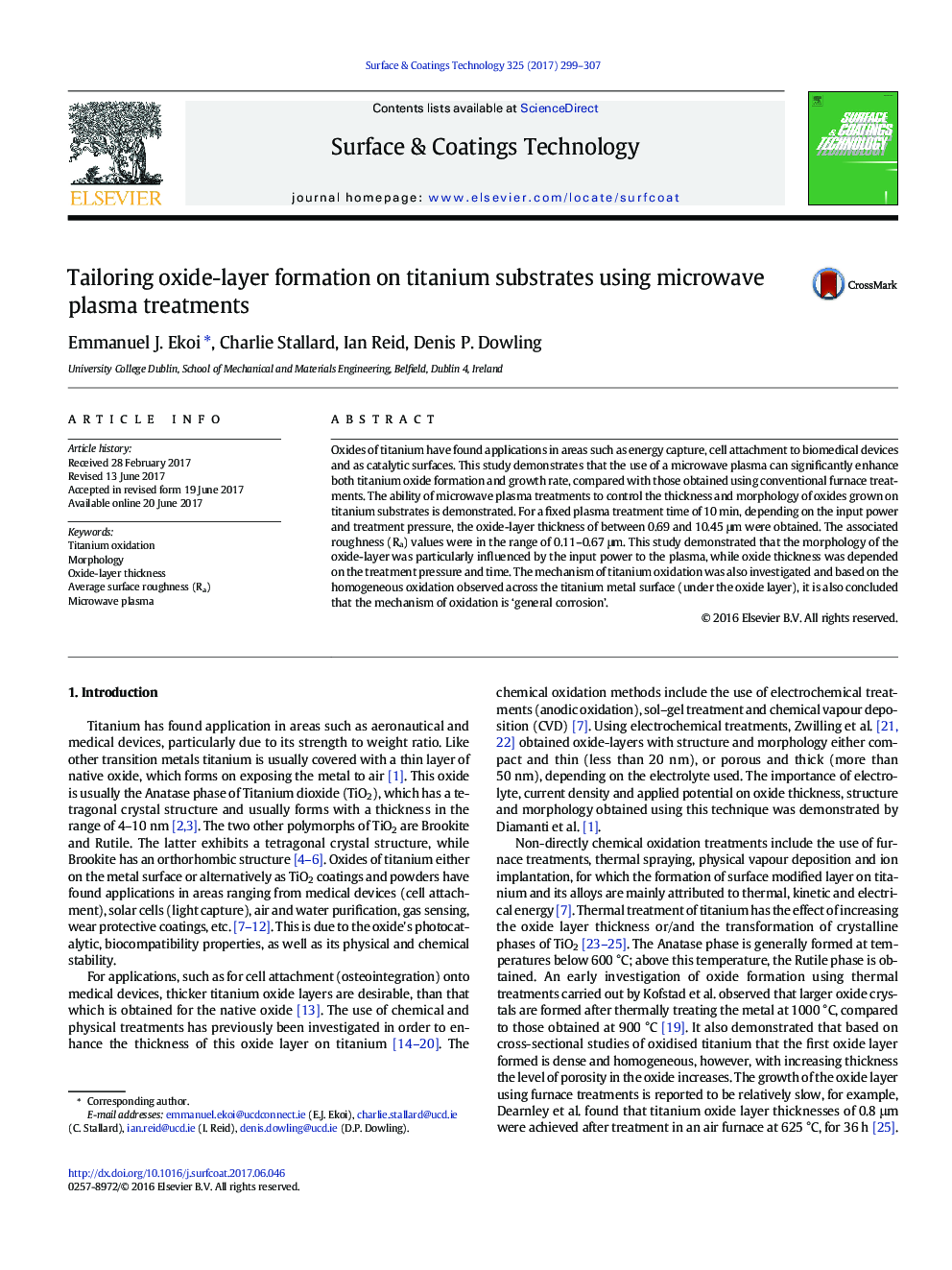| Article ID | Journal | Published Year | Pages | File Type |
|---|---|---|---|---|
| 5464818 | Surface and Coatings Technology | 2017 | 9 Pages |
Abstract
Oxides of titanium have found applications in areas such as energy capture, cell attachment to biomedical devices and as catalytic surfaces. This study demonstrates that the use of a microwave plasma can significantly enhance both titanium oxide formation and growth rate, compared with those obtained using conventional furnace treatments. The ability of microwave plasma treatments to control the thickness and morphology of oxides grown on titanium substrates is demonstrated. For a fixed plasma treatment time of 10 min, depending on the input power and treatment pressure, the oxide-layer thickness of between 0.69 and 10.45 μm were obtained. The associated roughness (Ra) values were in the range of 0.11-0.67 μm. This study demonstrated that the morphology of the oxide-layer was particularly influenced by the input power to the plasma, while oxide thickness was depended on the treatment pressure and time. The mechanism of titanium oxidation was also investigated and based on the homogeneous oxidation observed across the titanium metal surface (under the oxide layer), it is also concluded that the mechanism of oxidation is 'general corrosion'.
Keywords
Related Topics
Physical Sciences and Engineering
Materials Science
Nanotechnology
Authors
Emmanuel J. Ekoi, Charlie Stallard, Ian Reid, Denis P. Dowling,
